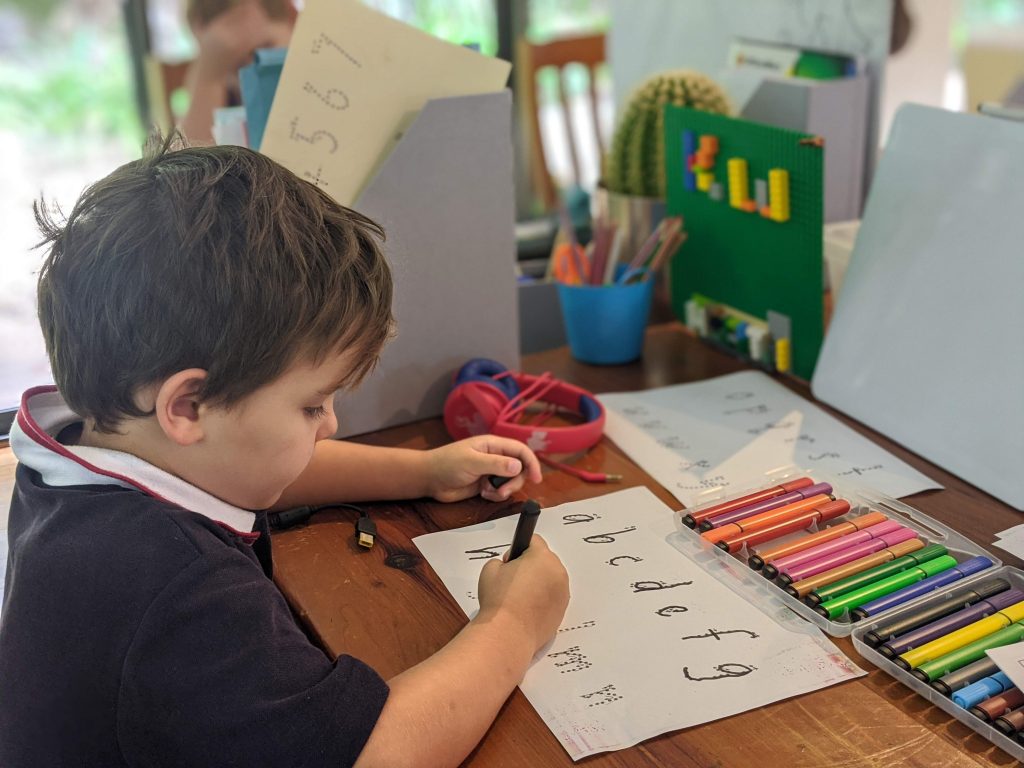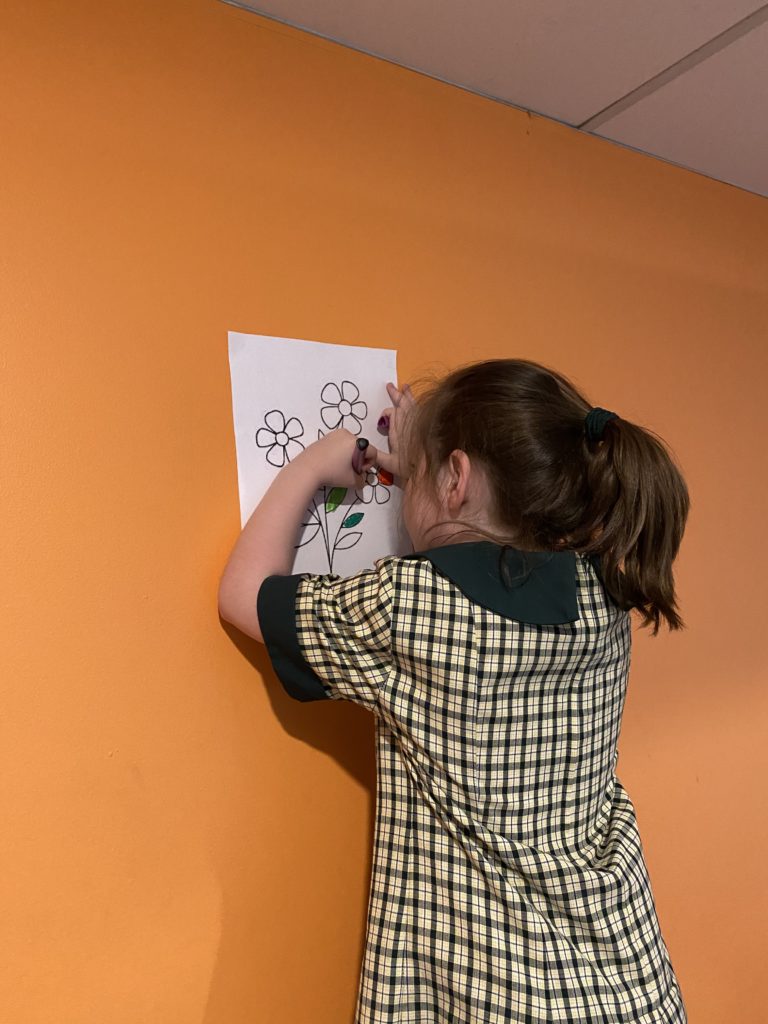Author: Aremi Blik, Paediatric Occupational Therapist
2 min read
Having legible handwriting is not always as easy as it seems. It’s not just about forming the letters and writing on the line. There are many parts of our body that we need to work together in order for our handwriting to be neat and legible. Keep reading to discover more about how our core strength is related to how we write.

One important factor in handwriting
There are many aspects involved in handwriting, but one of the most important areas is your core! While handwriting involves the use of the small muscles in our hands, wrists, and fingers, we also depend on other muscle groups in our body, like our shoulder girdle and core. These muscles help set us up to have good precision, motor control, fluency, and endurance for writing.
In order to write, you need a stable base of support from your core muscles. Did you know that your core muscles go from your pelvis all the way up to your mouth? Activities such as crawling, sit-ups, or animal walks can help strengthen your core. You can add blowing bubbles, whistles, or balloons to help activate these muscles even further. Frequently engaging in these activities will help build a stable base for your arm to move efficiently for handwriting.
Your shoulder stability and strength are also important. Activities such as pushing, pulling, and weight-bearing through your arms will help build the stability and strength required to make fine and precise movements for handwriting. These activities might include tug-of-war, wrestling with a friend or caregiver, or wheelbarrow walks.

Also, it’s important to think about activities that are motivating for your child to engage in that use the small muscles of the hands. Activities such as finding treasures in playdough, playing with Lego, or making crafts are great ways to develop the smaller, intrinsic muscles of the hand.
So, what’s the takeaway?
Your ability to handwrite starts with your core muscles. We also need to develop our stability and strength in the arms and shoulders, while building strength and dexterity in the hands, wrists, and fingers. Making sure these areas are strong is just one important aspect in supporting the motor control, fluency, and precision needed for handwriting.
If you feel like your child is struggling with their handwriting, talk to an occupational therapist for further guidance. Contact MoveAbout today. Check out our Facebook and Instagram pages for more tips and tricks on how to improve handwriting.
GET IN TOUCH

